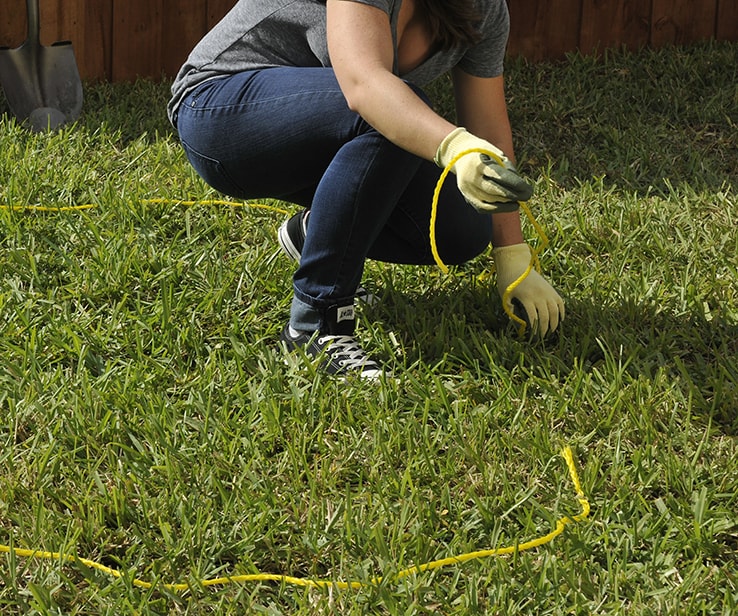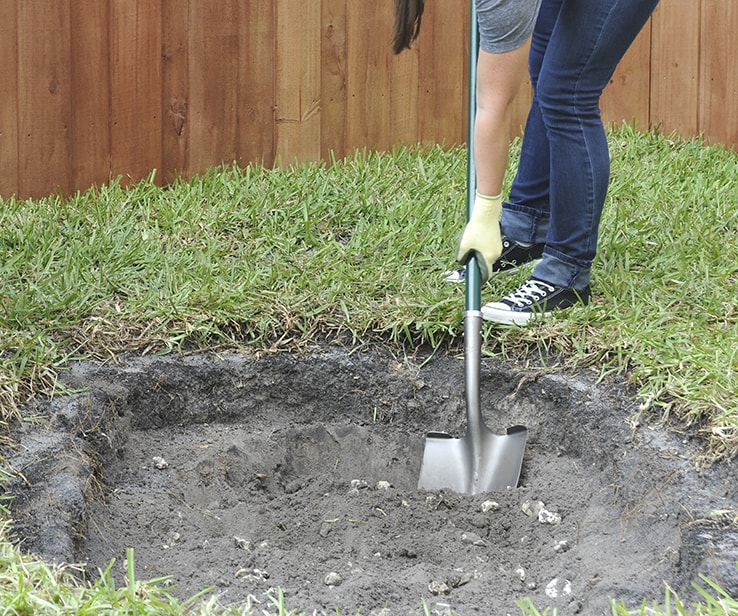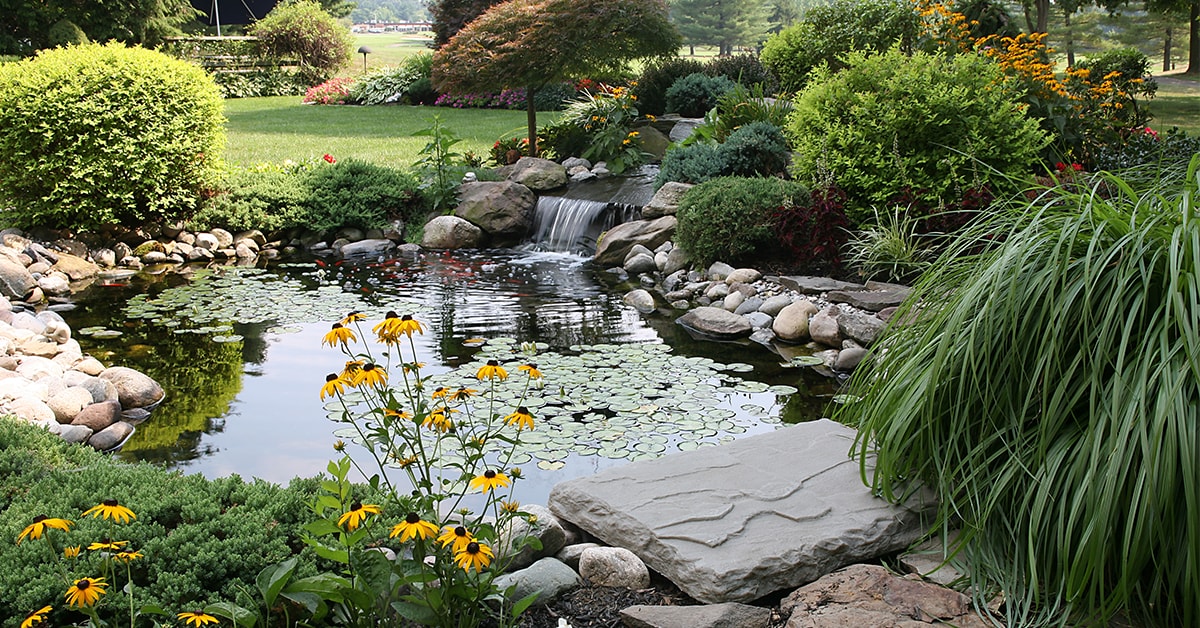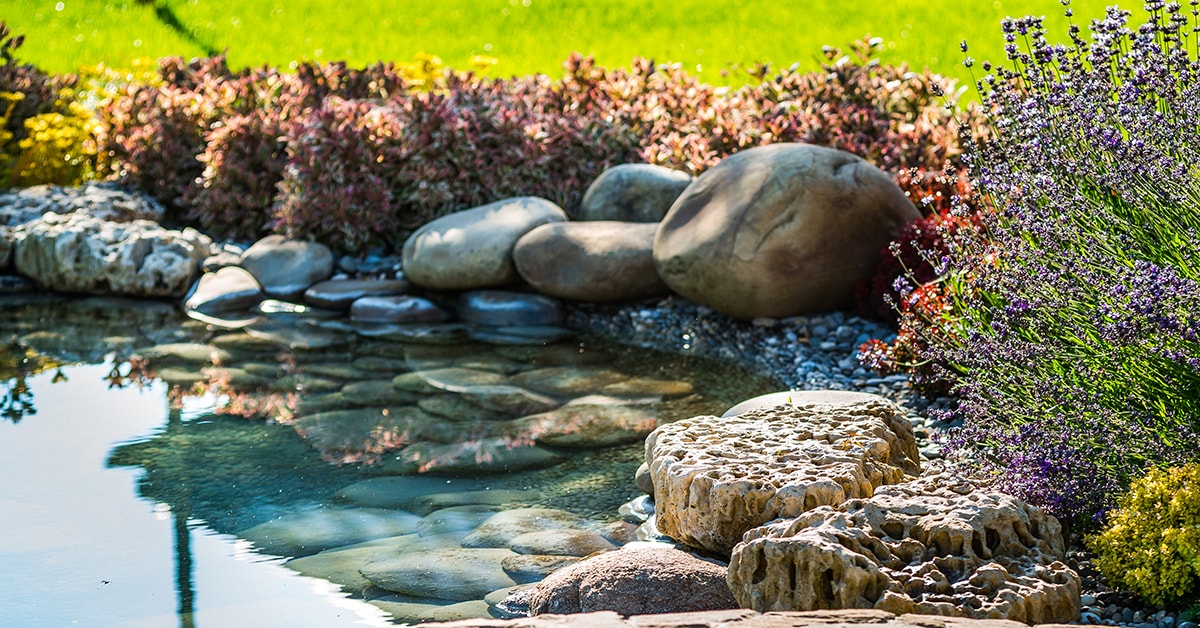
Published on October 16, 2023
How to Build a Backyard Fish Pond
Building a backyard fish pond or water garden can seem like a big DIY project to take on, but it doesn’t have to be complicated. Consult our planning guide to prevent common pitfalls and start your project off the right way, then simply follow this easy step-by-step guide.
1Dig, Dig, Dig!
If using a pond liner:
- Mark the area with rope or spray paint in the shape and size you’ve chosen for your pond.
- Start digging to a depth of 2-9” to house bog and marginal water plants.
- Dig out a deeper second tier 10"-16" deep for water lilies.
- Finally, dig the middle portion at least 24” deep for fish, ensuring that the lip of the pond is well levelled. This tiered design creates a shelf for plants and accessories around the edges of the pond, with a safe space for fish in the middle.
If using a mould:
- Mark the area with rope or spray paint in the shape and size of the mould.
- Dig a hole in the same shape as your mould, but slightly larger, ensuring that the lip of the pond is a few inches higher than the grass level to prevent groundwater from draining into your pond.
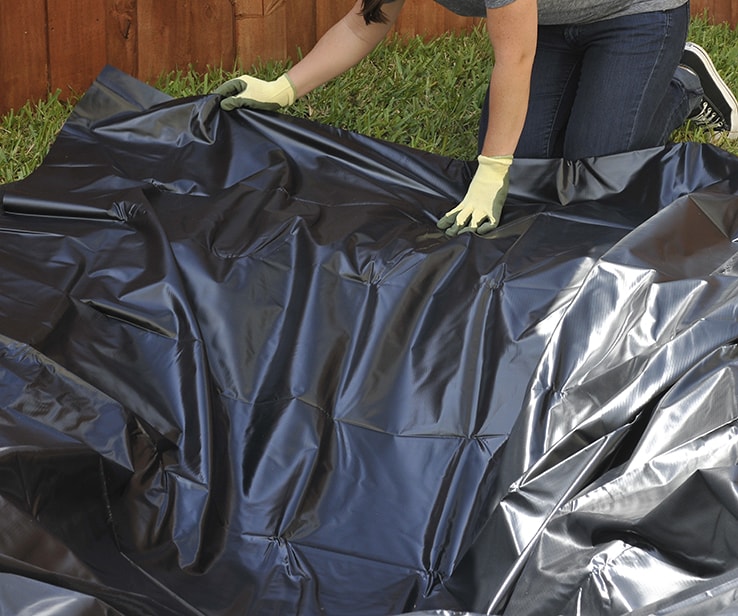
2Place the Liner or Mould
If using a pond liner:
- Clear away any debris from the pond hole that could potentially puncture the liner.
- Add an underlayment or a thin layer of sand to provide additional protection for the liner.
- Press the liner into all gaps to ensure a proper fit.
- Anchor with stones.
- Remember it is recommended to have at least 12” of liner overlap on each side of the pond, held in place by decorative rock or landscaping. This prevents the liner from slipping due to the weight of the water it’s holding.
If using a mould:
- Place the pond mould in the hole and level it using a carpenter’s level.
- Make sure the ground beneath has been well compacted and that the bottom of the pond lays flat on the whole surface.
3Fill the Pond with Water
If using a pond liner:
- Fill the pond with water, smoothing the liner as you go.
If using a mould:
- Fill a third of your pond with water and start filing the outside edges with sand. Add a little water to the sand to help compact it.
- Continue filing while adding sand around the circumference.
Important
Remember: calculating the best pump size is a very important step. Here is how to determine how much water your pond will contain: average length (feet) x average width (feet) x average water depth (feet) x 7.48 gallons per cubic foot
The general guideline for calculating pump size is to be able to pump half of the pond’s volume every hour. If your water garden is 2,000 gallons, the appropriate pump would move 1,000 gallons of water per hour. Refer to our planning guide for more information.
4Install the Pump
Pro Tip
Make sure you’re using a pump that is labelled for pond use because they’re designed to specifically handle organic materials in an aquatic environment.

5Add the Finishing Touches
- 5.1Decorate the pond and the circumference. Adding rocks or flowers around your pond is a great way to hide cords, tubing, and some filters. Rocks or pavers also help weigh down the liner, preventing slippage.
- 5.2Choose the different quantities and types of aquatic plants to ensure proper biological equilibrium in your pool.
- 5.3For the finishing touch, the addition of nozzle displays, spitters, lights, and floating decor make your pond look complete!
Maintain Your Water Garden
Maintenance of a water garden changes with the time of year. Here is a run down of how to care for your water garden in each season.
Spring
- When temperatures rise to 45 degrees, it is time to get your filtration system started. Inspect your water garden, pumps, hoses, and connections for proper working condition.
- If more than 1” of silt or sludge has built up during the winter, you need to vacuum the water garden.
- Check water parameters and nutrients, using the proper additives to achieve optimum water nutrient levels.
- Repot pond plants.
Expect your pond to turn green with algae. This will occur every spring because algae grows faster than the rest of your plants. When your other plants start to grow, the algae will go away—be patient!
Summer
- With longer sunlight, warmer temperatures and higher organic levels, algae conditions are ideal. Combat algae by adding oxygen to your water with a fountain, waterfall, or aerator.
- Adding snails can help keep algae off of the sides and rocks of your water garden.
- Mosquito breeding grounds can be a problem during the summer. If you don’t have fish, consider adding one to your pond to eat the mosquito larvae. Keep good water movement in your pond, preventing stagnant water to discourage mosquito breeding.
Fall
- Use a net to clear out dead leaves and other organic material before winter.
- As fish and snails become less active, expect an influx of algae. Avoid the urge to perform a deep cleaning which will only increase growth with the added nutrients from tap water.
- Bring non-hardy plants indoors.
- Trim hardy plants and move to deeper areas of the pond.
Winter
- If you have fish in your water garden, you will need to keep a hole in the ice to allow for toxic gases produced by decaying plant matter to escape:
- Bring your pump to the surface where it will bubble and keep an area open.
- Use a floating de-icer, or use a pan of hot water to melt through the ice.
- Do not use a hammer as you may harm the fish.
Disclaimer
These DIY projects are provided for informational purposes only. The information contained in RONA’s DIYs is intended to provide general guidelines to simplify jobs around the house. Because tools, products, materials, techniques, building codes, and local regulations are continually changing, RONA inc. assumes no responsibility for the accuracy of the information contained herein and disclaims any liability for the omissions, errors, or outcome of any project. RONA inc. makes no representation on the feasibility of any project and the viewer bears all risks coming with the realization of the projects. It is the responsibility of the viewer to ensure compliance with all applicable laws, rules, codes, and regulations for a project. The viewer must always take proper safety precautions and exercise caution when taking on any project. If there is any doubt in regard to any element of a project, please consult a licensed professional.









